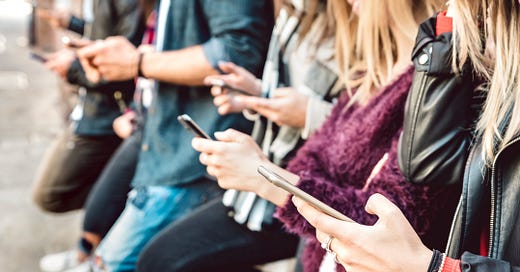How a city burns twice: once in reality, once online
Fake news, viral emotion, and what Los Angeles teaches us about the next reputation crisis
Remember the ICE raid protests in Los Angeles last week? While real flames and tear gas filled the streets, something equally destructive was happening online: a digital inferno that threatened to completely rewrite what actually happened.
A video of a burning Jeep went viral, except it wasn't from the protests. It was from a 2024 carjacking. Photos of torched police cruisers supposedly from LA? They were actually from the George Floyd protests years ago (the 2020 police brutality demonstrations after an African-American man died after being arrested by police outside a shop in Minneapolis). Within hours, city officials and major news outlets found themselves desperately trying to debunk claim after claim, playing an exhausting game of whack-a-mole with misinformation.
Here's the thing: this isn't some unfortunate quirk of social media. It's become the standard playbook. It’s the playbook of modern disinformation.
The fake news engine runs on emotion, not facts
You've probably noticed how the most outrageous stories seem to spread fastest. There's science behind that – Sinan Aral's research in Science (2018) confirms that false stories travel 70% faster than truth because they trigger stronger reactions. Fear, outrage, moral indignation: these are the fuels that power viral content.
And you don't need to be an influencer to start a wildfire. Duncan Watts showed that regular people, connected in just the right way, can spark massive information cascades. Remember that old game of telephone where stories get more distorted with each retelling? Bartlett's 1932 studies demonstrated how every retelling distorts a story – simplifying here, exaggerating there. Social media algorithms basically put that on steroids. By the time a story has been shared, screenshot, and reposted across TikTok and Twitter, the original fact is buried under layers of mutation.
Why we fall for it every time
Our brains are practically designed to spread misinformation.
Confirmation bias. We’ll share anything that aligns with our worldview, no fact-checking required.
Dunning-Kruger confidence. Those least informed are often most certain, making them prolific sharers of dubious claims.
Bandwagon effect. When we see “1.000 people shared this,” we jump on board, fearing isolation even if the claim is baseless.
Platforms know this. They're designed to maximize engagement, and nothing engages quite like outrage and novelty. Nuance and context? They don't drive clicks.
Your organization is next
Think this only happens in politics? That's exactly what every company thought before their own crisis hit. A single miscaptioned image or anonymous tip can torch your reputation in hours. Once your audience starts doubting you, rebuilding that trust becomes a marathon through quicksand. And don't forget, rumors often start internally, in private Slack channels or WhatsApp groups, before exploding outward and blindsiding leadership.
So what do you actually do about it?
First, stop being reactive. Start monitoring the weak signals across social media channels and forums. Know who your key amplifiers are. Have your crisis messages ready before you need them.
When a rumor pops up, you need to decide fast: respond or contain? Not every piece of misinformation deserves a public debunk. Sometimes addressing it just gives it more oxygen. But if you do respond, be fast, factual, and decisive.
Most importantly, educate your teams about cognitive biases and what we call "viral hygiene": never forward unverified content, no matter how juicy it seems.
From firefighting to fireproofing
The flames in Los Angeles may eventually die down, but the digital smog lingers long after. Misinformation doesn’t wait for clarity, it exploits confusion and thrives on repetition.
Your organization faces a choice: be a passive victim waiting for the next viral lie, or become an active defender of truth. Build those critical thinking muscles, establish rapid-response protocols, and remember: in the attention economy, the most dangerous fires are the ones that spread through screens, not streets.
Want to turn your team into misinformation first-responders? Let's talk.






